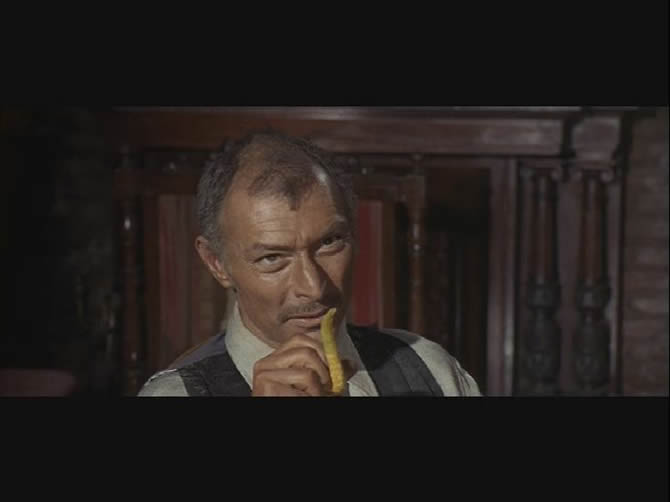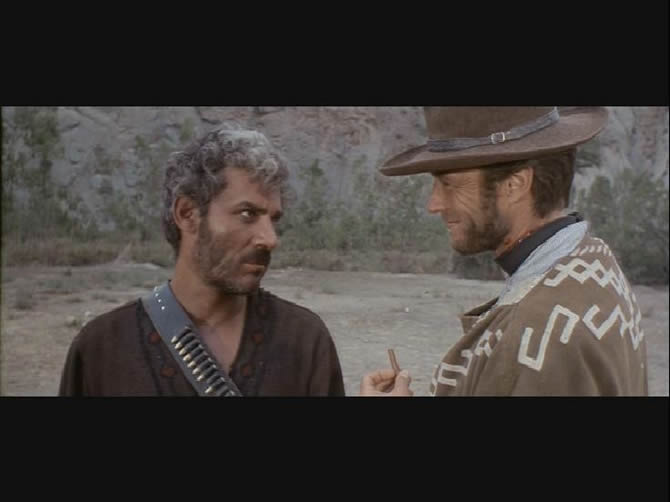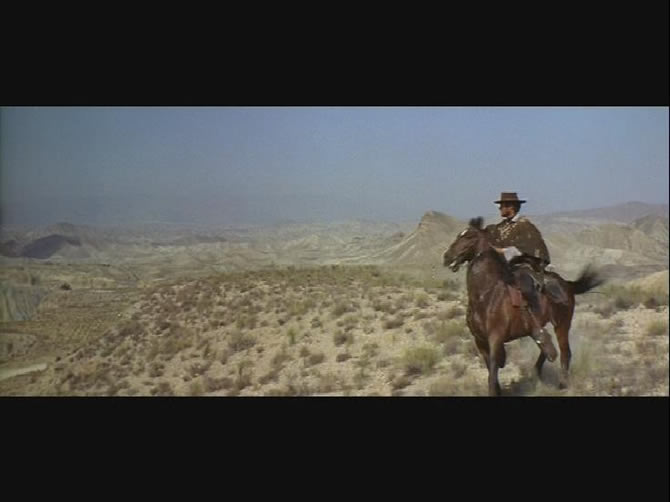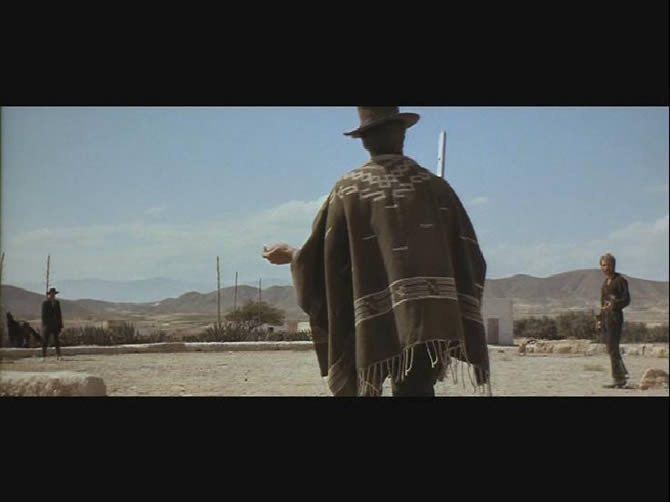|
Composer
Ennio Morricone
has said that Leone asked him to compose a film's music
before the start of principal photography - contrary to
normal practice. He would then play the music to the actors
during takes to enhance their performance.
Was
very insecure about the films he made and every film he
made was almost his last. Between Gi?la
testa (1971) and Once
Upon a Time in America (1984) he produced several films
and directed several commercials. He also did some uncredited
directing work on some of the films he produced. Before
his death he planned on making a film called The 900 Days
about the siege on Leningrad. He was able to get $100 million
in financing without even having written a script and he
planned to cast Robert De Niro.
Started
many feuds with his collaborators - Sergio Donati, for not being credited
for co-writing Il
buono, il brutto, il cattivo. (1966); Luciano Vincenzoni; and Tonino Valerii, whom he usurped
on the set of Il
mio nome ? Nessuno (1973) by directing many scenes of
that film.
Was
working on a screenplay idea called "A Place Only Mary Knows",
which was to star Mickey
Rourke and Richard Gere, which involved a
Union soldier and s Southern conman searching for a buried
treasure during the American Civil War.
Claimed
his lifelong ambition was to remake Gone with the Wind (1939).
Was
often noted to embellish events that occurred on the sets
of his films, as noted by many of his collaborators.
Although
they did not work together until 1964, as children Leone
and composer Ennio
Morricone were classmates.
His
last project was "Leningrad" about the siege of Leningrad
during World War II. He died of a heart attack two days
before he was to leave for Los Angeles to sign the contracts.
He had
two daughters, Francesca
Leone and Raffaella
Leone, and a son, Andrea Leone. Francesca appeared in
her father's Per qualche dollaro in pi?/a> (1965)
as a baby. Both girls were reportedly among the extras in
Flagstone in C'era una volta il West (1968).
For Leone's final film, Once
Upon a Time in America (1984), Francesca was given a
bit part and Raffaella was credited as Assistant Costume
Designer.
Clint
Eastwood was amused by Leone's on-set behavior during
their collaborations, having called the short, heavy Leone
"Yosemite Sam" for his over-the-top temper and attempts
to act like a cowboy through his thick Italian accent.
Was
voted the 41st Greatest Director of all time by Entertainment
Weekly, having directed only 11 films.
When
he made C'era
una volta il West (1968), his stylistic influence switched
from the more frenetic pace of Hollywood westerns (which
he put on hyper-drive for the "Dollars" trilogy with Clint
Eastwood) to the slower, tenser style of Japanese samurai
films, mainly those of Akira Kurosawa.
He controversially
baited his former collaborator, Clint Eastwood, by claiming after
making Once
Upon a Time in America (1984) that Robert
De Niro was a real "actor," unlike Eastwood. Eastwood
seemingly brushed off the insult, which may have resulted
by Leone's jealousy that Eastwood was a more successful
director by that time than Leone himself.
He died
at the age of 60 from a heart attack, which was most likely
resulted from his eating habits. He had an infamous love
for food and gained weight throughout his life until he
was borderline obese in the 1980s.
Biography
in: John Wakeman, editor. "World Film Directors, Volume
Two, 1945- 1985". Pages 577-581. New York: The H.W. Wilson
Company, 1988.
Son
of director Roberto
Roberti.
When
his old friend Clint
Eastwood - who was also close with Don Siegel - directed the Oscar-winning
"anti-Western" Unforgiven (1992), Eastwood dedicated
this film in memory of both Leone and Siegel.
Son
of Bice Valerian,
father of Francesca
Leone, Andrea Leone and Raffaella
Leone.
Famously
feuded with director Peter Bogdanovich over the directing
reigns of Gi?la
testa (1971) - Leone claimed that Bogdanovich was fearful
of such a large production and backed out at the last minute.
Bogdonavich stands by the story that Leone hired him as
a patsy, as he wanted to direct the film all along.
His
favorite actor from childhood was Henry Fonda, who was offered a
role in every one of Leone's early Westerns. After Fonda
finally worked with him on C'era
una volta il West (1968), he returned the compliment,
later citing that film as his favorite role.
His
favorite movies were reportedly (in no particular order)
Yojimbo (1961), Warlock (1959), The Man Who Shot Liberty Valance
(1962), High
Noon (1952), Shane (1953), and Vera Cruz (1954).
Aside
from saying 'Goodbye', Sergio Leone never spoke a word of
English and always relied on a translator when talking to
American actors. According to an interview with Eli
Wallach, he spoke to Sergio in broken up French and
discovered he is fluent in the language. This is how he
communicated to Sergio Leone when shooting Il buono, il brutto, il cattivo.
(1966) ("The Good, the Bad and the Ugly").
Member
of the jury at the Cannes Film Festival in 1971.
Member
of the jury at the Berlin International Film Festival in
1978.
Was
sued by Japanese director Akira Kurosawa for remaking his
Yojimbo
(1961) as "A Fistful of Dollars" (Per
un pugno di dollari (1964)) shot-for-shot without crediting
him, and copyright infringement. The production of Per un pugno di dollari (1964)
apologized, compensated Kurosawa with $100,000, and 15%
of box office revenues.
His
callous behavior towards his collaborators reached a high-water
mark during the shooting of C'era
una volta il West (1968) ("Once Upon a Time in the West"),
when bit-part actor Al
Mulock committed suicide on the set of the movie. Murlock,
who also had appeared as the one-armed bounty hunter in
Leone's Il
buono, il brutto, il cattivo. (1966), jumped from a
hotel on location in Guadix, Spain. Production manager Claudio
Mancini was sitting in a room in the hotel with Mickey Knox, an expatriate American
who had been hired by Leone as a screenwriter; they both
saw Mulock's body pass by their window. Knox recalled in
an interview that while Mancini put Mulock in his car to
drive him to the hospital, Leone said to Mancini, "Get the
costume! We need the costume!" Mulock was wearing the costume
he wore in the movie when he made his fatal leap.
Was
approached to direct Clint
Eastwood western Hang
'Em High (1968) , but he turned it down since he was
working on C'era una volta il West (1968)
at the time.
|







